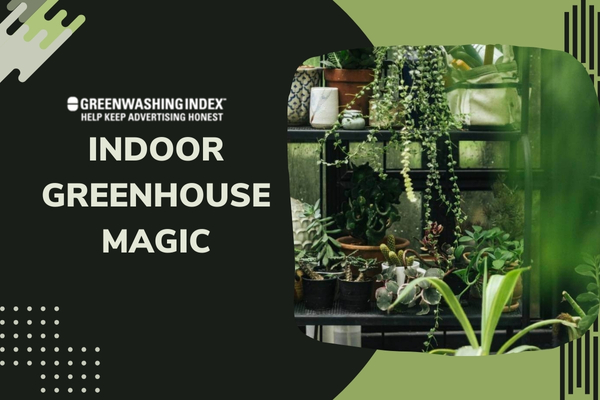Imagine stepping into a world where the lush greenery of summer thrives all year round, right in your own home. With an indoor greenhouse, this isn’t just a daydream—it’s reality!
Picture fresh vegetables at your fingertips, flowers blooming in the dead of winter, and the pure joy of gardening no matter what the weather outside is doing. I’m talking about bringing nature inside, where you are in control. Does that sound like a wonderland to you? Well, keep reading, and let me show you how it’s not just possible—it’s easy!
An indoor greenhouse is truly a gardener’s best friend. It allows anyone to nurture plants within their living space despite outdoor conditions. Think of it as your personal plant nursery that fits into your life year-round. If you’re wondering how to start with greenhouse gardening and make the most out of it, I’ve got you covered!
From choosing the right location that’ll ensure your plants thrive to maintaining perfect conditions—lighting, temperature, humidity—you can craft an ideal environment for almost any type of plant.
Choosing the Ideal Location for Your Indoor Greenhouse
Having an indoor greenhouse can be such a joy. You get to watch your plants grow day by day right inside your home. But setting it up takes a bit of planning. I found that doing things right from the start makes all the difference in how my plants turn out.
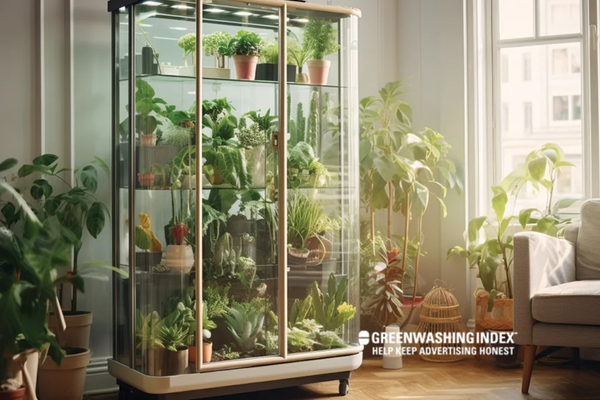
Finding just the perfect spot is super important because plants need certain conditions to thrive. My best advice? Look for a place with good light. Plants love sunlight, so near a window that gets plenty of sunshine is top-notch.
It’s not just about light, though. You also want to pick a space that’s not too cold or drafty. Being too chilly isn’t great for most plants, and you don’t want them shivering (if they could!). Also, think about how warm it gets in there; you don’t want your little green friends overheating, either.
Another thing I consider is moisture – since greenhouses are usually more humid than the rest of your home, putting it near sensitive stuff like electronics or wooden furniture might not be the best idea because dampness can cause trouble.
Lastly, remember that you’ll need some room to work around in there – tending to your plants means getting up close and personal often! So be sure there’s enough space for you to move comfortably without knocking into things.
The Essentials of an Indoor Greenhouse Setup
Once you’ve got the spot figured out, setting up your indoor greenhouse comes next. Here’s what I think are the must-haves:
- Sturdy shelves or tables – You’ll need somewhere safe and stable for your pots and containers.
- A good quality grow light – Especially if natural sunbeams are in short supply.
- Thermometer and hygrometer – To keep an eye on temperature and humidity levels.
- Ventilation system – Fresh air keeps everything ticking along nicely indoors.
- Watering system or supplies – Because those plants need regular drinks, too!
Keeping track of all these elements can seem like much at first glance, but worry not; each piece has its role in making sure those greens get everything they require!
Also Read: Mattress Disposal: Easy Steps for Eco-Friendly Solutions
The Benefits of Having an Indoor Greenhouse
Indoor greenhouses are like little magic rooms where plants can grow no matter what’s happening with the weather outside. They create a special place for plants where it’s always cozy and right for them to grow well. Here, I’ll chat about a couple of amazing things that come with having an indoor greenhouse.
Year-Round Gardening at Your Fingertips
One of the coolest things about an indoor greenhouse is that it lets you grow plants all year round. You don’t have to wait for summer or spring, and you surely don’t need to say goodbye to your garden when winter comes knocking.
- Weather Who? Inside your greenhouse, it doesn’t matter if it’s raining, snowing, or super hot outside. Your plants still get their perfect day every day.
- Grow Anything Anytime: In here, you can plant strawberries in the cold months and harvest pumpkins even when it does not fall.
- Control at Your Fingers: You are like a weather wizard for your plants. You decide how warm or cool they need it by controlling heaters or fans.
By setting up this space indoors, you keep your gardening game strong all year without worrying about dressing up in layers or slapping on sunscreen.
The Joy of Growing Organic Produce Indoors
Another awesome point is growing your own fruits and veggies right inside your home, which is not only fun but also really good for you!
- Tasty Treats: When you pick a tomato from a plant you grew yourself, it tastes incredible – much better than the ones sitting in stores.
- Healthy Snacks: These treats don’t just taste better; they’re free from weird chemicals because you control what goes into growing them.
- Safe and Sound: You know exactly where your food is coming from—it’s not traveling miles getting poked and prodded by strangers; instead, your hands are the first to touch after picking.
Growing organic produce indoors means fresh salads whenever you want and juicy berries that didn’t take a truck ride to get to your plate.
Getting into greenhouse gardening lets me play with my green friends any time I want—from comfy cucumbers to peppy peppers—and makes sure that my kitchen is always filled with healthy goodies grown by me!
Also Read: Eco-Friendly Paper Towels: A Composting Guide You Need
Nurturing Your Plants in an Indoor Greenhouse Environment
An indoor greenhouse can be like a small paradise for plants. It’s a place where they get just what they need to grow strong and healthy. But setting up this special space so your green babies thrive takes a bit of know-how, especially when it comes to climate control. Let’s dive into how you can make your indoor greenhouse the perfect cozy spot for your plants.
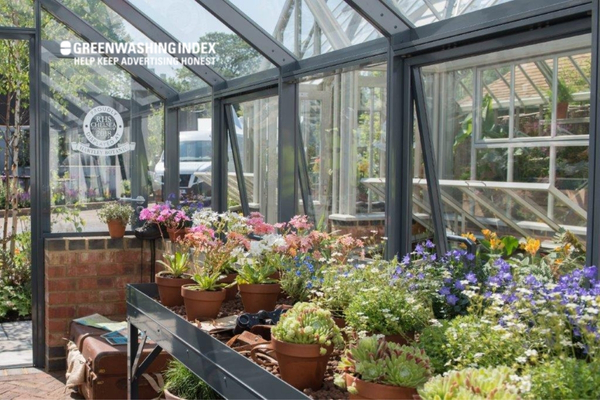
Tailoring Climate Conditions Within Your Indoor Greenhouse
Creating the right climate inside an indoor greenhouse is about three main things – humidity, temperature, and airflow. Here is how I make sure each one is just right:
- Managing Humidity:
- Use a spray bottle: I give my plants a misty shower to increase the moisture in the air.
- Set out trays of water: When water evaporates, it adds humidity to the air – think of it as a mini-ocean for your plants.
- Use humidifiers: These are machines that puff out tiny water drops into the air; they’re great for bigger greenhouses.
- Setting Temperature:
- Heaters are my go-to during cold times: A proper heater keeps the chill away from my tropical friends.
- Cooling systems work magic when it gets too warm: Think fans or portable AC units that keep my leafy pals from getting too hot.
- Thermometers help me track the heat levels. One look at them, and I know if I need to warm things up or cool them down.
- Ensuring Good Airflow:
- Fans do more than just cool down; they keep fresh air moving around so every plant can breathe easily.
- Open windows gently — but only if outdoor air won’t mess with my perfect indoor climate!
Making these elements work together means happy plants that grow their best.
Light Management Strategies for Optimal Plant Growth
Now let’s throw some light on the lights! Choosing between LED and fluorescent lighting is like picking superhero costumes for your plants — you’ve got to suit them up in what helps them perform their best! Here’s how each light source helps stars in my own indoor gardening adventures:
- LED Lights:
They’re energy-savers, which means less money spent on bills while still giving off lots of light. The glow from LEDs doesn’t heat up much either, which means no surprise summer days for my greens. Plus, you can find ones that shine in different colors that match what specific plant types love most. - Fluorescent Lights:
These are old-school classics often seen in office ceilings but don’t underestimate their growing power — especially T5 fluorescent tubes:- They cast a wide net of light ideal for baby seedlings across big spaces.
- Their cooler tones mimic spring sun rays, which say ‘wakey-wakey’ to sleeping seeds wanting to sprout.
Each type of light has its superpowers depending on who you’re shining it on – seedlings might prefer one, while full-grown leafies love another. And timing matters, too; I plan out when lights switch on and off because, just like us, plants need their rest as well!
Letting there be light wisely ensures everything grows bright — it’s all about giving those photosynthesizing buddies what they crave most throughout day and night cycles.
So there we have it! Keeping our green companions satisfied indoors means playing weather wizard with humidity, temperature & airflow, along with being lord (or lady) of illumination by scripting sunrise-to-sunset routines catered just right using LEDs or fluorescents. Get these parts playing nicely together, and you’re all set with an indoor garden sanctuary ready to bloom!
Also Read: Composting Corn Cobs: Your Ultimate Eco-Guide
Troubleshooting Common Challenges with an Indoor Greenhouse
Indoor greenhouses can be a great way to grow plants all year round. However, they come with their challenges, especially when it comes to pests.
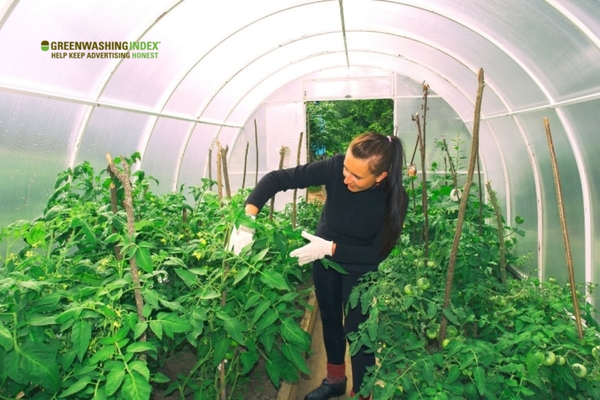
Since we’re working indoors, we don’t have nature’s helpers like birds or beneficial insects that eat these pests in a regular outdoor garden. Below, I’ll share some tips on how to deal with common pests in your indoor greenhouse without harming your precious plants.
Pest Control Without Compromising Plant Health
Pests are any gardener’s nightmare, and in an indoor greenhouse environment, getting rid of them without the help of outdoor elements requires a bit more effort and thoughtfulness.
Here are some natural ways to manage common pest issues inside your greenhouse:
- Manual Removal: Sometimes, the simplest way is just to pick those little critters off by hand. It can be time-consuming but very effective for larger pests like caterpillars or slugs.
- Insecticidal Soap: Use a mild soap solution to spray on infected plants. This will help get rid of aphids and spider mites while being gentle on the plants themselves.
- Neem Oil: Applying neem oil is another non-toxic way to fight off pests like whiteflies and thrips without using harmful chemicals.
- Natural Predators: Consider introducing natural predators that won’t harm your plants but will eat the pests. Ladybugs are one such beneficial insect that feeds on aphids and other soft-bodied insects.
- Diatomaceous Earth: This is a powder made from crushed algae fossils that cut and dry out insects with exoskeletons when they crawl over it.
- Sticky Traps: Bright yellow sticky cards can attract and trap flying insects such as gnats or whiteflies, effectively reducing their population in your indoor greenhouse.
By following these tips consistently, you can protect your indoor garden from annoying pests while keeping everything all-natural for healthy plant growth!
Also Read: Tupperware Recycling: Can You Really Recycle Them?
Boosting Your Indoors Ecosystem’s Productivity
When I think about an indoor greenhouse, it’s like a mini jungle inside my home. It’s full of life, colors, and fresh air. But to make everything in this little ecosystem work its best, there are some smart tools and new technology that can help a lot. Let me share what I’ve learned about these modern methods that are changing the game for growing plants indoors.
Innovative Tools & Technology Enhancing Modern Indoor Greenhouses
First off, let’s talk about your usual tools for greenhouse gardening: pots, soil, water cans – you know the basics. But now there’s more! Nowadays, we have automated systems that make taking care of plants much easier and way smarter.
Imagine sensors in your indoor greenhouse that check on your plants all by themselves! They can tell how much light the plants get or if they need water. It’s like having a robot helper telling you when to do what for your green buddies.
For light, LED grow lights have become popular because they don’t heat up so much, and they use less power while giving plants all the brightness they need to grow well. This is super cool because most homes don’t get enough sunlight coming in through windows for greenhouse cultivation to really flourish.
Next up are watering systems that work on a timer or even sense when the soil dries out – no more forgetting to water the plants! Some advanced systems can even provide nutrients along with water; it’s like giving vitamins to your plants automatically!
With these tools and techy helpers joined together in one smartphone app or control panel at home – think of it as mission control for growing plants indoors – you get not just an ordinary indoor gardening space but an ultra-smart one that takes better care of itself.
So, there’s a bunch of amazing stuff happening with indoor greenhouses today. If you wanna jump into this world of high-tech plant nurturing where everything is taken care of almost by itself – congrats! You’re living in great times for being a plant lover with an eye on innovation.
That’s pretty much what I’ve gathered on boosting productivity in my own little jungle at home using innovative tools & technology – I hope this helps as you explore your own indoor gardening adventures!
Also Read: Pineapple Composting: Your Ultimate Guide to Doing it Right!
Advanced Tools and Techniques for the Modern Indoor Greenhouse
Growing plants indoors has changed a lot over the years. With new tools, I can tell you that having an indoor greenhouse is easier and more fun than ever.
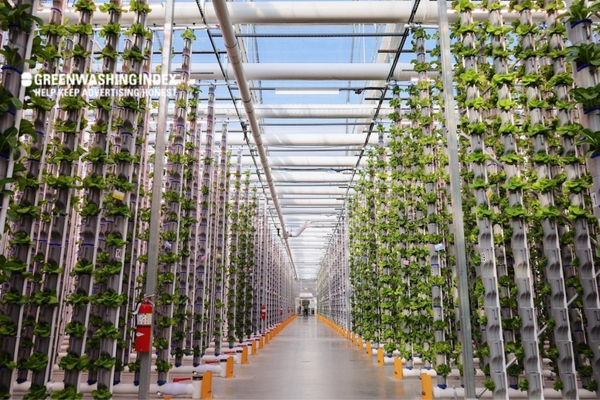
The Latest Gadgets for Smart Garden Management
Nowadays, there are some really cool gadgets that make taking care of your indoor greenhouse almost like playing a game on your phone. Let me share with you these amazing tools that have turned up my gardening game.
Automated Watering Systems: One of the best things that’s happened to indoor greenhouse gardening is automated watering systems. Imagine, you don’t have to worry about remembering to water your plants! These systems check the soil and give it just enough water as needed. So, your plants never get too thirsty or too dunked in water.
Climate Controllers: Another great tool is climate controllers. Plants love certain temperatures and levels of humidity to grow well. A climate controller keeps track, making sure it’s always just right inside your greenhouse. If it gets too hot or cold, this smart gadget will adjust things so your plants stay happy.
Growth Monitoring Apps: I also find growth monitoring apps super helpful. These apps connect with sensors placed near your plants, which collect data such as how much they have grown or if they need more nutrients. This way, you can watch how well they’re doing right from your smartphone!
Using these gadgets does wonders in simplifying my indoor gardening tasks; it feels like my plants are taking care of themselves! With these advanced tools in hand (or in our smartphones), we’re well-equipped to tackle the unique challenges of indoor greenhouse cultivation effortlessly!
Also Read: Eco-Friendly Kitchen: 10 Green Living Tips You Can’t Ignore!
Making the Most of Your Space: From Seed to Harvest
When I talk about making good use of my space for an indoor greenhouse, I mean growing healthy plants from seeds to harvest, even when space is tight. That’s what I’m going to share with you – how to get the most out of your indoor gardening efforts.
Small Space Solutions for Big Harvests
You might think you need a lot of room to grow your own plants indoors, but that’s not true. With some clever planning and a few tips, anyone can turn a small area into a bountiful garden. Here’s how to make sure every inch counts:
- Vertical Planting: This means using shelves, hanging baskets, or trellises. Plants like climbing beans or tomatoes love growing upwards! Walls and high spaces are often unused in small areas; make them work for you.
- Choose Compact Varieties: Some plants are bred to grow smaller and still produce plenty of food—like dwarf peas or mini cucumber varieties. They fit perfectly in indoor greenhouses without taking up too much room.
- Container Gardening: Pots can be placed together like puzzle pieces on shelves or tables. Always pick containers that fit nicely next to each other so that no space is wasted.
- Succession Planting: Once one plant is harvested, quickly replace it with another seed or young plant. This keeps your greenhouse full and productive all year round.
- Multi-Level Growing Systems: Imagine having more than one “floor” in your indoor greenhouse! Above the ground-level pots, install tiers for other crops—more levels mean more plants!
- Interplanting: Mix different kinds of plants together in the same pot or planting tray—they can share the nutrients and even help each other grow better!
- Smart Water Management: A good watering system makes sure each plant gets just what it needs without wasting water—drip irrigation kits are great for this.
- Use Reflective Surfaces: Place mirrors or foil around your planting area so light reaches every leaf from all directions—even below!
- Optimize Light Sources: Proper lighting helps plants flourish; use LED grow lights because they’re efficient and cover a broad color spectrum needed by the plants.
- Pruning & Training Plants: Keep an eye on how big your plants get—if they start stretching out too much, clip them back! Well-shaped plants use less space more effectively.
Good planning goes hand-in-hand with smart techniques when trying to maximize harvests in an indoor greenhouse setting. By picking the right plant varieties and arranging them effectively in my limited square footage, I’ve turned my small corner into a little jungle that feeds me fresh produce throughout different seasons! Using these ideas should help anyone do the same while enjoying their own indoor gardening journey.
FAQs
How can I increase the efficiency of my indoor greenhouse?
To boost your indoor greenhouse efficiency, focus on optimizing light exposure, maintaining ideal temperatures, managing humidity properly, and choosing suitable plants. Regular monitoring helps keep conditions just right for plant growth.
What are some common mistakes to avoid when managing an indoor greenhouse?
Don’t overlook ventilation; poor air circulation can harm plants. Also, avoid overwatering or under-watering, and be careful not to mix up plants that need different environments. Regular check-ups are key to preventing these errors.
Can smart home devices be integrated with my indoor greenhouse for better management?
Yes, smart home devices like automated watering systems, climate controllers, and growth sensors can all make managing your indoor greenhouse easier and more precise. They allow for remote monitoring and adjustments as needed.
Conclusion
Bringing a slice of nature indoors with an indoor greenhouse has been an incredible journey. From choosing the perfect spot that grants my plants enough light to tailoring the very climate they thrive in, every step has filled me with a sense of accomplishment. I’ve enjoyed year-round gardening and the joy of fresh organic produce right from my living room!
With smart tools and innovative techniques, even space constraints couldn’t dampen my harvest joy. The indoor greenhouse is not just about planting seeds; it’s about growing life and sustainability within our own homes.

